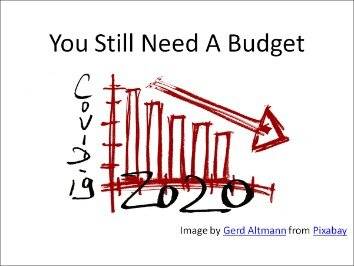Content

23 different savings methods are explained, from Hard Savings to Cost Avoidance. In addition, you’ll learn how best to identify, measure, and communicate those savings to your organization. The next step is to evaluate diversity performance and make improvements to drive business growth and do good in the world. Procurement Return On Investment showcases the ratio between the cost of procurement and savings or business value delivered. Operational KPIs aim to establish what is happening in the day-to-day business to identify possible improvement areas. This is a valuable KPI for procurement because it provides a total cost basis for the item or service.
- A single KPI measurement can provide a useful snapshot of the business’s health at a specific point in time.
- If you are not tracking the expenses closely and making sure you have a long-term plan to ensure they reach a healthy ratio, you will be in trouble.
- Performance Indicators The higher the operating income, the more profitable you company is likely to be.
- They are also widely used to track trends and analyze progress toward strategic goals.
- Investors are often interested in the OER to specifically examine how high your operating costs are in relation to generated revenue.
- Many nonprofits tend to focus on attracting new donors, missing the opportunity to grow the ones they already have.
- The current ratio is one of the essential metrics used to analyze the liquidity position of a business in the short run.
The Inventory Turnover KPI indicates how efficiently a company sells and replaces its inventory during a particular period of time. So it reflects an organization’s ability to generate sales and quickly re-stock. The Accounts Payable Process Cost indicates the total cost of processing all payments and invoices in a particular period. Starting with the most widely used financial metrics, we’ll move through the full spectrum of important budget metrics that most companies should measure. So there are some common and important financial metrics to include in your financial reporting.
Key Fundraising KPI’s to look for:
You have successfully navigated your way through a highly intensive crash course on the top 36 finance KPIs and metrics for your reporting in 2022. You should now have the foundation required to create new KPIs, assess financial metrics, and streamline your reporting with financial KPI software. Financial reporting solutions can streamline a lot of outdated processes that your company may have in place. Take a look at our reporting solutions for Finance to see how we can help your company grow. We can track how effective management is by using tools such as financial metrics and KPIs.

The Quick Ratio gives a more accurate overview of a company’s financial health than the Current Ratio as it ignores liquid assets such as inventories. This is a very informative ratio when compared over multiple periods. The asset turnover ratio tells us how quickly a company generates revenue from its assets. This number is most telling when compared to others in the industry.
Payroll Headcount Ratio
Buying companies on a multiple of EBITDA is common practice; the higher a company’s EBITDA and EBITDA margin, the more likely the company will be able to charge a premium at time of sale. In the SaaS industry, a company metric is the rule of 40 which says annual revenue growth combined with EBITDA profit margin should be above 40%. Key performance indicators refer to a set of quantifiable measurements used to gauge a company’s overall long-term performance. KPIs specifically help determine a company’s strategic, financial, and operational achievements, especially compared to those of other businesses within the same sector. A high gross profit margin means that your company can pay off all its operating expenses and still have money to invest in innovation and growth.
How to do KPI in Excel?
- In Data View, click the table containing the measure that will serve as the Base measure.
- Ensure that the Calculation Area appears.
- In the Calculation Area, right-click the calculated field that will serve as the base measure (value), and then click Create KPI.
You come to know about the number of times the average receivable balance gets converted to cash in a given duration. The gross profit margin is helpful in the intermediate stage of the business cycle. It helps to understand whether the products offered are profitable for your company or not.
KPI #5. Working Capital
Customer Acquisition Cost – In a marketing-driven business, CEOs must focus on the total cost of gaining that business and how it compares to AOV and LTV. Minorities, non-discrimination, and rights of the vulnerable groups were in the past taken into account as part of the corporate social responsibility programs and reporting of companies. As the awareness is increasing, diversity programs have been differentiated into specific development areas to follow.
- You’ll need to overhaul your business strategy to get your net profit margin in the green.
- There may be a long time frame required for KPIs to provide meaningful data.
- By updating your forecast on a regular basis, say weekly or even daily, your assessment of coming expenditures and revenues will be closely aligned with the actual situation of your business.
- It’s calculated by Revenue ÷ Number of Employees and is also known as Revenue per FTE .
- The number of budget versions produced before the final approval depends on the leadership’s ability to plan efficiently the next term’s budget.
As a recap, we have talked about what a financial KPI is, why financial reporting is important, cash flow metrics, and how to create your own financial KPIs. We will now move onto the key financial metrics that can be derived from the balance sheet and the income statement. There are many other financial KPIs you can track and monitor to understand how your company is doing and how your actions impact progress toward shared goals. The financial KPIs listed above are a great place to start if you’re unfamiliar with finance. Understanding how these metrics influence business strategy is a critical financial accounting skill for all managers to develop.
KPIs are metrics that provide insights into the underlying financial and operational strength of a business. They can be based on any kind of data that is important to a company, such as sales per square foot of retail space, click-through rate for web ads or accounts closed per salesperson. Many KPIs are ratios that highlight important relationships in data, such as the ratio of profit to revenue or the ratio of current assets to current liabilities. A single KPI measurement can provide a useful snapshot of the business’s health at a specific point in time.
- It’s a very commonly measured KPI as it provides a snapshot of the operational efficiency of a business.
- But, for those who have the stomach for more, here are some others that I find incredibly telling.
- Financial KPIs are used to help determine a company’s operational achievements from a financial perspective, often being compared to those of their competitors in the same sector.
- A higher FAT indicates that the company is efficiently utilizing its fixed assets to generate more sales, while a lower FAT goes the other way around.
- Financial analysis is the process of assessing specific entities to determine their suitability for investment.
The Complete List Of Financial Kpiss the time it takes to convert an investment in inventory or some other resource input into cash. This gives you an understanding of how long cash is tied up in inventory before the inventory is sold and cash is collected from customers. Employee costs usually make up the bulk of a company’s expenses, therefore it’s often useful to measure how much revenue you are actually generating for each employee in your company. These examples of KPIs are for helping you to understand how well your business is performing in terms of profitability.

